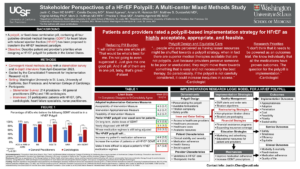Introduction: Dissemination and implementation (D&I) research, crucial in translating evidence into practice, is yet to be included as a separate study design category for ethical consideration. Researchers are asking relevant questions about how current ethical standards can be applied to D&I trials. The responsible conduct of D&I research requires an adaptation of existing bioethical frameworks […]
12. Moving Towards Consensus in the Responsible Conduct of Dissemination and Implementation Research: A Scoping Review









